Top Iran Fruits: Seasonal Treats & Benefits
Love Fruit? Head to Iran!
Iran might surprise you. This 4-season country isn't just about carpets and history. Thanks to its varied climate and skilled farmers, Iran produces a wide range of fruits.
You'll find all your favorites in Iranian market, from refreshing melons and juicy citrus to plump, sweet stone fruits like peaches, apricots, and plums. But that's not all! Iran also has unique fruits you might not have heard of yet.
This blog is your guide to Iranian fruits, sharing tips on where to find the freshest fruits and how to enjoy them like a local.
Just a heads up: reading about all this deliciousness might make you crave a taste. If that happens, Iran welcomes you with open arms (and fruit baskets)!
List of Iran Fruits You Must Try
- Anar (Pomegranate)
- Chaghale Badum (Baby Almond)
- Goje Sabz (Greengage)
- Zalzalak (Hawthorn)
- Azgil (Jungle Pear)
- Limoo Shirin (Sweet Lemon)
- Toot Sefid (White Mulberry)
- Shah Toot (Royal Mulberry)
- Kharbozeh (Honeydew)
- Khormaloo (Persimmon)
- Zoghalakhte (Cornelian Cherry)
- Angoor (Grape)
- Albaloo (Sour Cherry)
- Narenj (Bitter Orange)
1- Anar
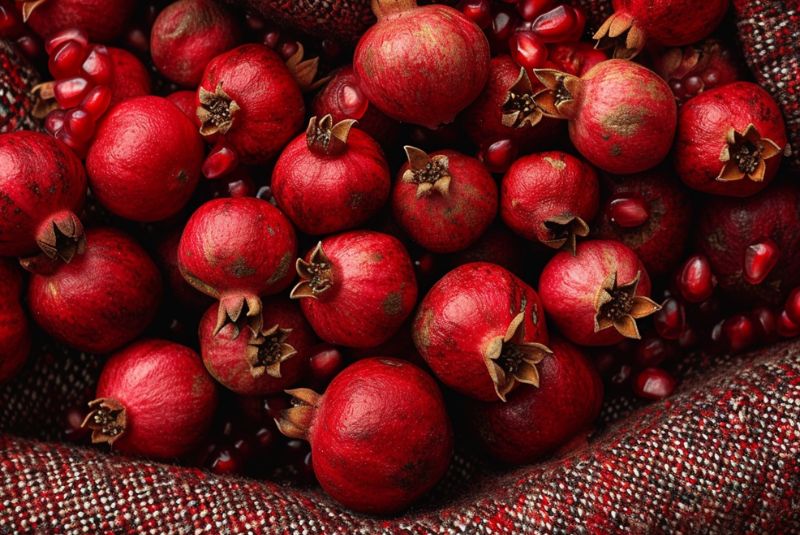
Anar (انار), which means pomegranate in Farsi, is Iran's national fruit. It's a delicious treat with a long history and deep cultural significance in the country. Pomegranates have been cultivated in Iran for thousands of years, with evidence dating back to 5000 BC. They are associated with fertility and abundance in Iranian mythology and folklore.
Pomegranates are known for their beauty. They are round with a tough, reddish-orange rind that conceals hundreds of jewel-toned arils, the juicy seeds we typically eat.
The flavor of a pomegranate can vary depending on the variety, but they generally offer a delightful balance between sweetness and tartness. The arils are the edible part, with a juicy and slightly acidic taste.
Pomegranates (Anar) are incredibly significant during Yalda night, the Iranian celebration of the winter solstice. Here are a few ways to enjoy Anar during Yalda night:
- Enjoy the arils on their own for a burst of sweet and tart flavor.
- Sprinkle the arils with a touch of salt and golpar (Persian hogweed) for a unique taste experience.
- If separating the seeds seems daunting, use Iranian Âblamboo technique. Squeeze the pomegranate firmly to break the arils inside, then make a small hole in the rind and squeeze the juice out.
| Suggestion: Iranian Caviar - Iran's Black Pearl
2- Chaghale Badum
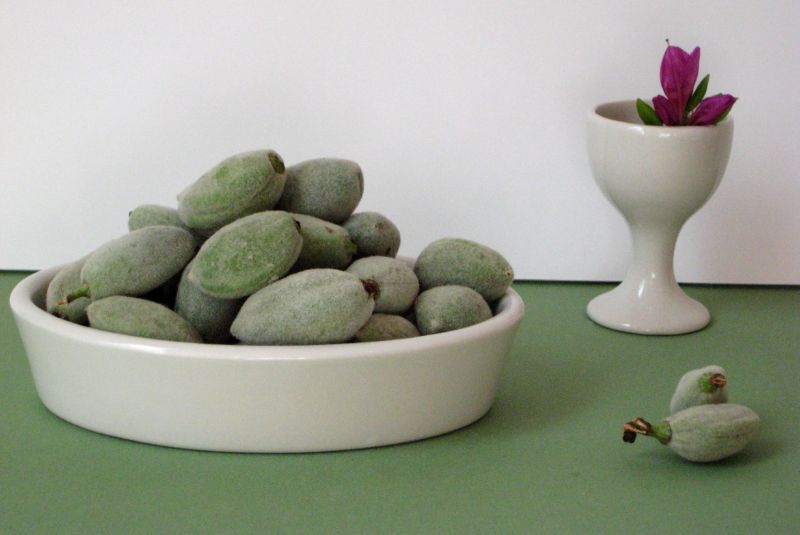
Chagale Badam (چغاله بادام) literally translates to "baby almond" and refers to young, unripe almonds in Iran. While almonds are a popular nut enjoyed worldwide, Chagale Badam offer a unique taste and experience.
Chagale Badam are enjoyed in Iran during spring, typically from late March to May and their charm.
Unlike the mature almonds you might be familiar with, Chagale Badam have a crunchy texture and a milky, slightly bitter flavor. Some people find it slightly sweet as well. Chagale Badam are enjoyed whole, directly in their shells. The outer green hull may not be suitable for eating, so people typically crack them open to access the immature nut inside.
The classic way to enjoy Chagale Badam is with a sprinkle of salt. The salt enhances the unique flavor and adds a pleasant contrast in taste.
While primarily enjoyed on their own, Chagale Badam can also be pickled or used to make chutneys for a unique flavor addition.
| Discover: Persian Saffron - The Best in the Whole World
3- Goje Sabz
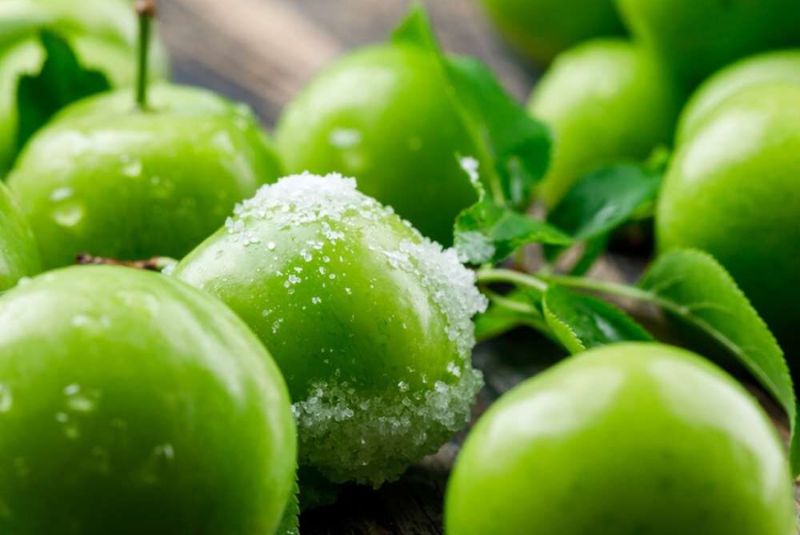
Goje Sabz (pronounced goh-jeh sahbz), greengage, is a springtime specialty in Iran. Unlike the ripe plums you might be familiar with, Goje Sabz are enjoyed when they are young and unripe.
Goje Sabz are known for their tart and tangy flavor, a refreshing contrast to sweeter fruits. They are not typically eaten plain due to their strong tartness. The unique taste and seasonal availability of Goje Sabz make them a nostalgic treat for many Iranians, bringing back fond childhood memories. The best way to enjoy Goje Sabz is with a sprinkle of salt and crushed mint leaves.
Although primarily enjoyed as a snack, Goje Sabz can also be used in chutneys or pickles for a unique flavor addition.
| Read more: Top 20 Persian Snacks
4- Zalzalak

Zalzalak (زالزالک in Farsi) is a delicious and antioxidant-rich autumn fruit native to Iran, particularly in the northwestern regions. Zalzalak is also known as hawthorn in English, referencing the Crataegus genus of plants it belongs to. Zalzalak berries are small and round, typically a vibrant red color when ripe. They have a single pit in the center and a tart or sweet-tart flavor profile, depending on the variety.
Zalzalak is a fall fruit, typically harvested in late September or October in Iran. Its seasonal availability makes it a cherished part of the autumn harvest. When fully ripe, Zalzalak can be enjoyed fresh for a burst of sweet and tart flavor.
Zalzalak is known for its potential health benefits. It's high in antioxidants and may contribute to heart health and lower blood pressure.
5- Azgil

Azgil (ازگیل), also known as Golâbi Jangali (meaning "jungle pear" in some regions), is a fruit you'll find in Iran, particularly in the northern parts like Gilan province. It might not be familiar by its Farsi name, but you might recognize it by its other name: Loquat.
This juicy fruit resembles a pear in shape and is enjoyed for its sweetness. However, unlike most pears, you won't find Azgil rock-hard at the market. Azgil is actually quite tart when unripe, and like some other fruits such as persimmons, it needs to be slightly soft or "bletted" before it's considered tasty.
Azgil is a popular ingredient in Torshi, a traditional Iranian pickle. It can be cooked down into a paste or sauce, adding a tangy and sweet note to dishes like fish or stews. In some areas, it's even mixed with pomegranate molasses.
So, if you're ever on a trip to northern Iran and see Azgil for sale, don't be afraid to give it a try!
6- Limoo Shirin
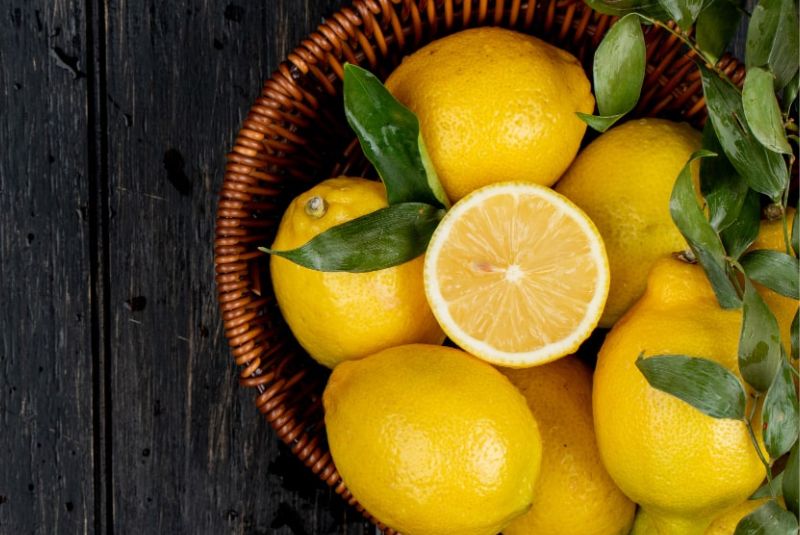
Limoo Shirin (لیمو شیرین), literally translating to "sweet lemon" in Farsi, is a citrus fruit native to Iran. Unlike the sour lemons most people are familiar with, Limoo Shirin has a surprisingly sweet and fragrant flesh. This citrus is known for its delightful sweetness, even containing high levels of vitamin C. The rind also has a sweet scent.
Limoo Shirin looks similar to a Meyer lemon, with round plump fruit and a slightly yellowish-green rind that turns a sunny yellow when ripe. The flesh inside has a greenish hue and offers a unique taste profile; a citrus fruit that combines the sweetness of an orange with the floral aroma of a rose.
Limoo Shirin can be enjoyed in many ways. People enjoy juicing it for a refreshing drink, using the juice in Persian tea, or even eating it fresh like any other citrus fruit. Be aware though, unlike regular lemons, the sweetness fades quickly after cutting, so it's best enjoyed fresh.
| Discover: Iranian Beverages and Drinks
7- Toot Sefid
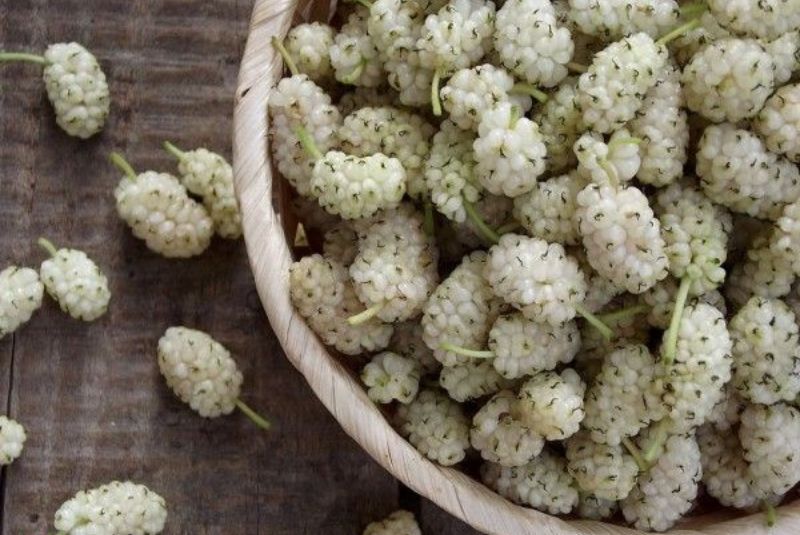
Toot Sefid (توت سفید) or "white mulberry", is a juicy berry with a sweet flavor that grows on mulberry trees. Fresh Toot Sefid are a springtime delight. They start appearing on the trees in spring and continue to be enjoyed through early summer. You might also find them dried as "Toot Sefid Khoshk" which translates to "dried white mulberries." These dried fruits are a popular snack.
Unlike the smaller mulberries you might find elsewhere, Toot Sefid on Iranian trees can grow quite large. This abundance is part of their charm.
A fun tradition associated with Toot Sefid is the harvest. People spread a large piece of fabric under a mulberry tree laden with ripe fruit. Then, they gently shake the branches, showering the fabric with plump, juicy Toot Sefid – a quick and satisfying way to collect a bounty of these delicious berries.
8- Shah Toot

Shah Toot (شاتوت) is a type of Persian mulberry, a specific cultivar of the Red Mulberry (Morus rubra). Compared to regular mulberries, Shah Toot is known for its larger size, juicier flesh, and a flavor profile that balances sweetness with a pleasant tartness. When fully ripe, the fruit turns a deep red or almost black, resembling a blackberry but with a distinct taste and texture.
Shah Toot trees tend to grow slower than other mulberry varieties, but they make up for it with their prolific fruit production throughout the summer months.
Just like other mulberries, Shah Toot can be enjoyed fresh off the tree for a delightful snack. Their sweetness also makes them perfect for jams, jellies, or even pies.
| Suggestion: Traditional Persian Breakfast You Should Try!
9- Kharbozeh

Kharbozeh (خربزه) is a refreshing summer treat in Iran, also known as a Persian melon. Kharbozeh is a cultivar of Cucumis melo, the same species as other melons like cantaloupe and honeydew. It's believed to have originated in Central Asia and has been cultivated in Iran for centuries.
Unlike the round melons you might be familiar with, Kharbozeh is elongated and unridged. The skin is a dark green with irregular yellowish bands, and the flesh inside is a vibrant deep green.
Kharbozeh is known for its sweetness and juicy flesh. Compared to other melons, it can have a slightly muskier aroma. The most popular way to enjoy Kharbozeh is simply sliced up and eaten fresh, especially during the hot summer months in Iran. It's a perfect way to cool down and stay hydrated.
While often eaten plain, Kharbozeh can also be incorporated into other dishes. It can be blended into a refreshing drink with a touch of honey or mint, or even used in popsicles for a cool summer treat. In some regions, the seeds are roasted and salted for a tasty snack.
When choosing a Kharbozeh, look for one that feels slightly soft when pressed gently near the stem end. This indicates ripeness and optimal sweetness. Avoid melons with hard skin or blemishes.
10- Khormaloo
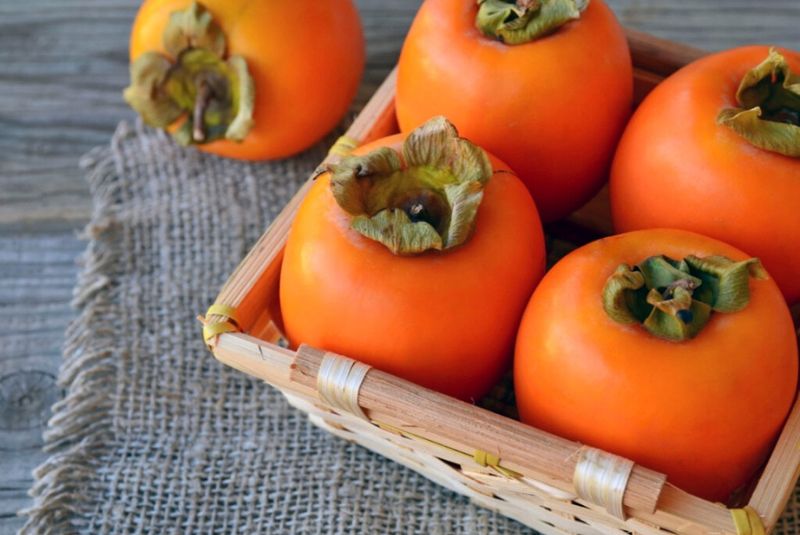
Khormaloo (خرمالو) isn't actually a unique Iranian fruit, but rather the Farsi name for a fruit you might already know by another name: The Persimmon!
Khormaloo literally translates to "date-plum" in Farsi. This likely refers to the taste of the fruit, which can be reminiscent of both dates and plums.
The Khormaloo, or Iranian persimmon, is most likely a variety of the Hachiya persimmon (Diospyros kaki), but juicier and sweeter. Hachiya persimmons are known for their astringent taste when unripe, and they need to be fully ripe and softened before enjoying.
As all of the Persian fruits come with health benefits, Khormaloo is also a good source of vitamins A and C, making it a healthy and delicious treat.
| Also read about: Popular Persian Sweets
11- Zoghalakhte
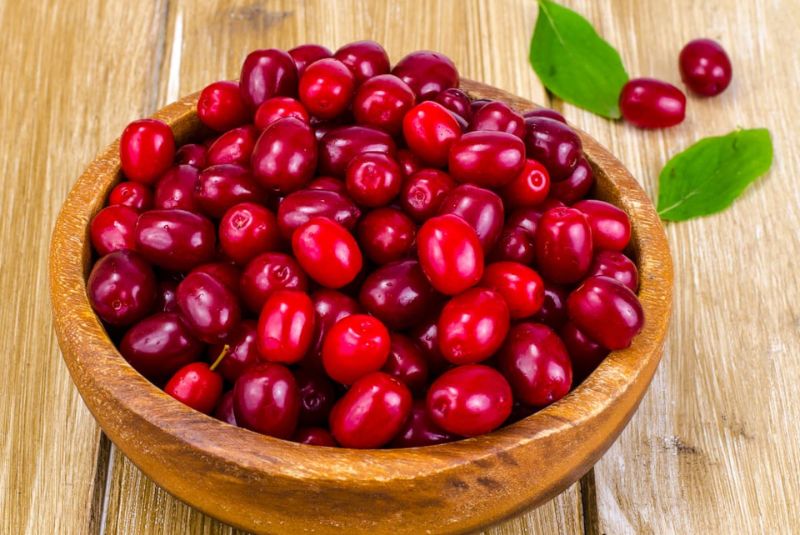
Zoghalakhte (زغال اخته), also known as dried cornelian cherry or dogberry, is a tart and unique fruit enjoyed in Iran, particularly during the autumn season. The fruit itself is a small, oblong drupe with a bright red color. It's a seasonal fruit, available for a short period in the fall. To preserve its unique flavor and enjoy it year-round, Zoghalakhte is usually dried.
The taste of Zoghalakhte is quite tart, with a sour punch. This makes it a popular ingredient for jams, preserves, and even beverages in Iranian cuisine.
Due to their tartness, dried Zoghalakhte is often soaked in water or a mixture of water and pomegranate paste before consumption. This soaking process mellows the tartness and brings out a sweeter side to the fruit.
Zoghalakhte is also a key ingredient in Lavashak, a popular fruit leather candy in Iran. Lavashak is known for its sweet and tart flavor, and Zoghalakhte contributes to that unique taste profile.
12- Angoor
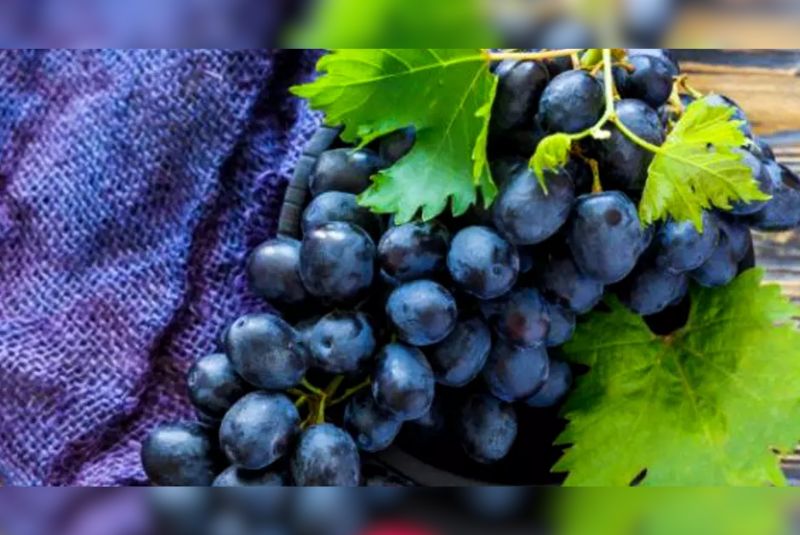
Angoor (انگور) is the word for "grapes" in Iran. Iran has a long history of grape cultivation and boasts over 40 different grape varieties thriving in various regions, each with its own unique characteristics. Evidence suggests grapevines have been cultivated in Iran for millennia, making it one of the oldest cultivated fruits in the country. Some popular types of grapes in Iran include:
- Asgari: These are small, green grapes with a thin skin, known for their sweetness.
- Keshmeshi: Another popular variety, these are seedless grapes perfect for snacking.
- Shahroudi: This grape is known for its high yield and juicy flesh.
- Angoor Yâghuti: These grapes are called "champagne grapes" due to their yellowish-green color and refreshing flavor.
While Angoor are enjoyed fresh like any other grape, they're also used in various ways in Iranian cuisine:
- Verjuice (آب غوره āb-ghooreh): Unripe grapes (غوره) are used to make verjuice, a souring agent used in salad dressings and other dishes.
- Grape Molasses (شیره shireh): Grape juice is boiled down to create a thick syrup used as a sweetener or condiment.
- Dried Grapes/ Raisin (کشمش kishmish): Some Angoor varieties are dried to create raisins, a popular snack and baking ingredient.
Grapes are often depicted as a symbol of plenty and bounty in Iranian folklore. Stories might describe paradises overflowing with grapes, representing a life of comfort and luxury.
Although alcohol consumption is restricted in Iran, there is a long history of wine production in the region. Historically, grapes and wine were mentioned in Persian poetry and literature as symbols of joy, celebration, and even love.
13-Albaloo
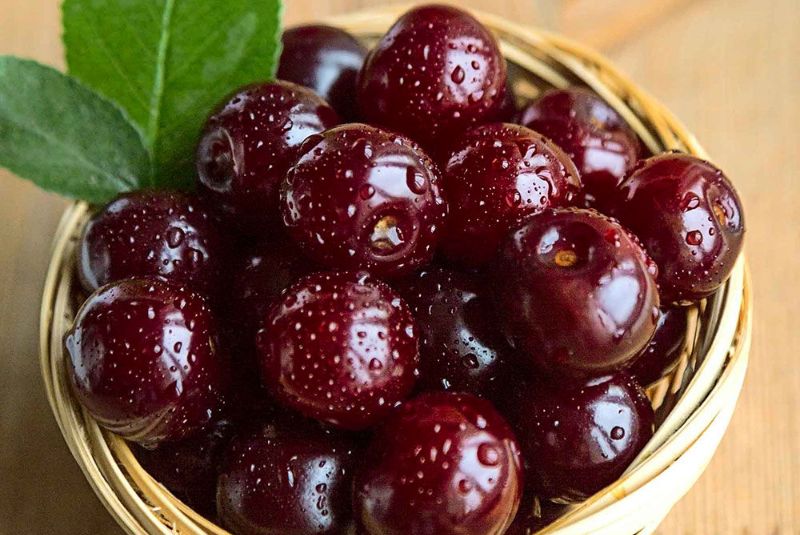
Albaloo (آلبالو) is the word for sour cherry in Iran. It's a tart and tangy fruit that adds a unique flavor profile to many Iranian dishes and sweets.
Albaloo is a seasonal fruit, typically enjoyed fresh in Iran during the late spring and early summer months. It’s refreshing tartness is a welcome contrast to the hot summer weather.
Albaloo is a versatile ingredient in Iranian cuisine, used in both sweet and savory dishes:
- Albaloo Polo: This is a popular Iranian rice dish featuring sour cherries, often cooked with chicken or other meats. The sweet and tart contrast of the Albaloo with the savory rice and meat is a delightful combination.
- Sharbat-e Albaloo: A refreshing summer drink made from Albaloo juice, sugar, and water. It's a perfect way to cool down on a hot day.
- Jams and Preserves: Albaloo is sometimes preserved in jams or syrups to enjoy its flavor year-round in pastries or desserts.
14- Narenj
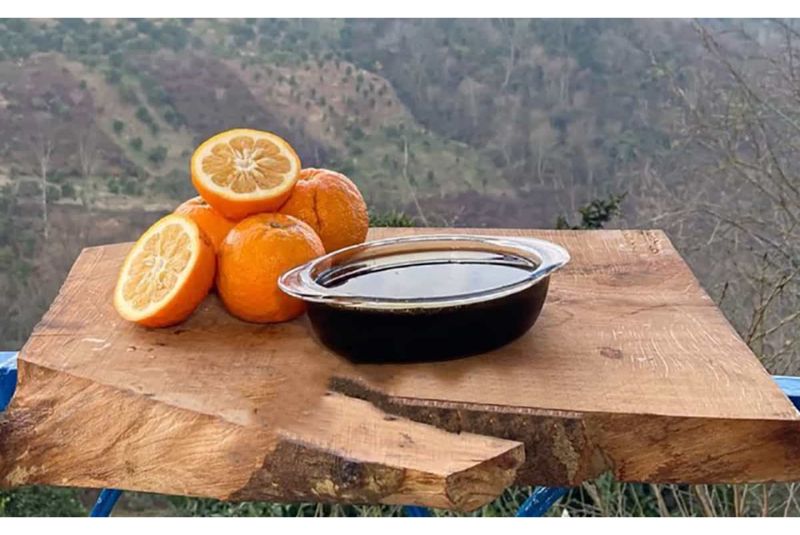
Narenj (نارنج), also known as the bitter orange, is a unique citrus fruit that holds a special place in Iranian cuisine and culture. Unlike the sweet oranges you might be familiar with, the narenj offers a distinct flavor profile that adds complexity and depth to many dishes.
Narenj has a bumpy, uneven rind that's a deep green when unripe, turning to a brighter yellow as it matures. The flesh inside is pale yellow and segmented, similar to other citrus fruits. However, the key difference lies in the taste. Narenj is significantly more bitter than a sweet orange, with a sour and acidic punch.
The acidity of narenj juice is perfect for marinades, tenderizing meats and adding a delightful tang to fish dishes. It's also a key ingredient in sour sauces that complement rich stews and rice dishes.
Already hooked with Iranian fruits and cuisine culture?
If you want some more, check out our food tour right now!
The Four Seasons of Iran Fruits
Iran's diverse climate offers a delightful journey through fruit flavors across the four seasons:
Spring (Farvardin to Ordibehesht - March to April)
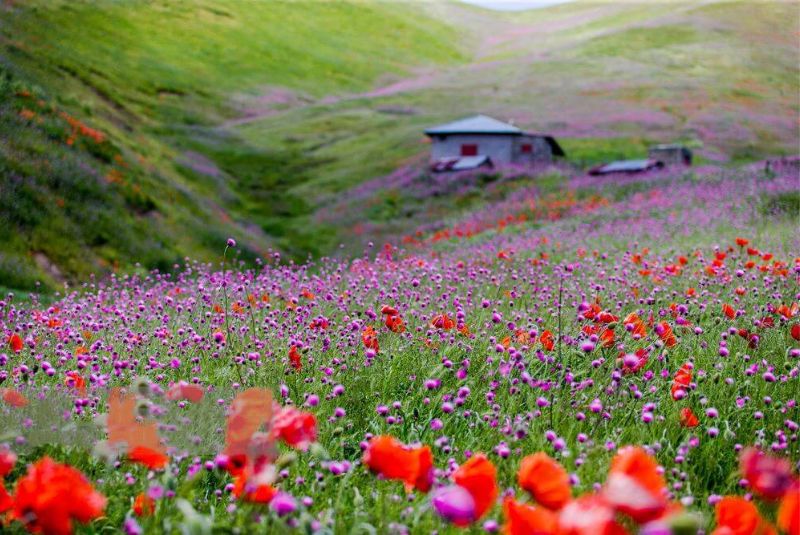
Spring in Iran is a mild and pleasant season, bursting with new life. This is a time of fresh and vibrant fruits like goje sabz (unripe plums), chagale badam (baby almonds), various apples (including Golab), pears, and berries (strawberries, white/black mulberries). Stone fruits like cherries, nectarines (Shebarang), and early watermelons and cantaloupes also make their appearance.
Summer (Khordad to Shahrivar - May to August)

Hot and dry summers in Iran call for refreshing fruits. Enjoy a bounty of apricots, white nectarines, black plums, various grapes (seedless, white, black), late-season pears, and the arrival of figs (seedless and fresh), yellow and black plums. Summer fruits like watermelons, melons (Talebi), Kharbozeh and mulberries continue from spring, joined by Chanbar cucumbers, Zoghalakhte (hawthorn), and even raspberries. This might also be the time for some imported bananas.
Autumn (Mehr to Azar - September to November)

Cooler temperatures bring a beautiful harvest season. Look for an abundance of citrus fruits like tangerines, oranges, narenj (bitter oranges), limes, sweet lemons, and even red grapefruits. Enjoy the peak season for pomegranates (including black varieties), along with apples, peaches, and the arrival of Khoermaloo (persimmons) and dates. Zalzalak (hawthorn berries) join the party, and some summer fruits might linger into early autumn.
Winter (Dey to Esfand - December to February)

Winters in Iran vary by region, but most are mild. Citrus fruits remain king with all varieties of oranges, tangerines, sweet and sour lemons, and grapefruit. Pomegranates continue from autumn, and you might find some leftover watermelons and Kharboze melons. This is also the season for loquat (amlek).
Best Fruits in Iran: Which Region Reigns Supreme?
You can find most seasonal fruits throughout Iran, especially in major cities like Tehran. However, certain regions are famous for cultivating specific fruits known for their exceptional taste. Here are the best Iran fruits by region:
- Apples & Peaches: Damavand
- Tangerines: Jahrom
- Oranges: Jiroft & Bam
- Pomegranates: Saveh
- Gilas (Cherries): Mashhad
- Apricot: Urmia
- Watermelon: Minab
- Yellow Plums: Golestan & Neishabur
- Red Plums: Dasht Moghan, Ardabil Province
- Melons: Torbat-e-Jam
- Strawberries: Kurdistan
- Toot Sefid & Shah Toot (Mulberries): Kashan
- Palm Dates: Regions with palm groves (mainly southern Iran)
- Grapes: Takestan, Qazvin
- Pears: Natanz
- Narenj (Bitter Oranges): Shiraz
| Read more: Iranian Seafood Cuisine
Final Takeaway
Iran's climate magic means delicious fruits all year! From tangy tangerines to juicy melons, each region boasts its own specialties. Plus, Iran fruits aren't just tasty treats - they're packed with potential health benefits! Visit Iran and taste the difference - your taste buds will thank you!
Share your story!
Comment below and let us know about your Experience.
Your story inspires others!


Comment
Leave a Comment